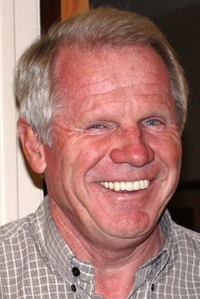Economic developers Robert Naranjo and Lucia Sanchez were pleased to see boutique wineries spring up along the high road to Taos. But when they discovered that grapes were being sourced from outside the immediate area, they jumped into action. With funding from Northern New Mexico Connect and the county of Rio Arriba, Naranjo and Sanchez helped organize local micro-growers – those with one quarter- to two-acre plots – into a grape growers association. Barely a year later, the group has received advice from multiple experts, pooled funds to order root stock in bulk and planted thousands of vines. In two years, when the vines reach maturity, the association plans to begin selling their combined harvest to local wineries.
Tag Archives: entrepreneur
Identify Specialty Before Looking for Investors

Holly Bradshaw Eakes, Principal, The Holly Company Business Consultants
The greatest challenge an entrepreneur may face is finding capital to launch a business, especially when the business idea is related to high-cost startup such as that found in the technology sector. For an entrepreneur with realistic plans for rapid business growth and the potential to scale to larger markets, trading partial ownership for capital may be the only option.
Venture capitalists currently fund about one out of every thousand startups. With the odds stacked against obtaining equity capital, an entrepreneur must identify the investors most likely to invest in his business. Determining which source to pursue depends largely on industry focus, business stage and the amount of money needed. A handful of equity investors have offices in New Mexico and actively pursue investments in the state.
Venture Capital: It’s More Than Money

Kim Sanchez Rael, General Partner, Flywheel Ventures (at time of writing)
Jim Collins, author of Built to Last and Good to Great, and an old friend of mine, has written that the critical questions in life are who-decisions, not what-decisions. “The primary question is not what mountains to climb but who should be your climbing partner,” he writes. As professional investors, our evaluation of each potential investment opportunity emphasizes the entrepreneurial team more than market strategy, technology or financial projections. When evaluating the pros and cons of bringing on an investor as a partner in your business, your considerations should be similarly weighted toward who-decisions. Professional investors should provide assistance and value in many areas beyond financial resources. Here are some key areas to consider when selecting an investment partner:
Get Insight from a Debt Schedule
The last few years have been a bumpy ride for many small businesses. Sales may have slumped. Costs could have gone up. Small business owners have weathered this economic storm with a courageous combination of resilience, creativity, clarity and passion. Those who have been able to keep their doors open understand that important fundamentals about how to manage money in a small business are as true today as they’ve ever been.
Financial institutions do not want saddle people with loan payments they cannot afford. Community-based lending organizations, such as ACCION New Mexico •Arizona •Colorado, are in the business of helping people understand their financial health and providing access to healthy business credit.
That credit is a tool, and like all tools, performance must support its cost. Lenders do not want credit to become overwhelming and prevent a small business from reaching its goals. Continue reading
Budgets Matter to Business
Business owners striving to make it through the tough economy need to know how cash flows in and out of their business. A good place to start is with a budget – a basic tool used to forecast when cash will be collected and when expenses must be paid.
Many owners of small and midsize businesses don’t take the time to create a budget, or they neglect to update the one they have. In this slow economic recovery, every dollar is precious and it’s more important than ever to know where money is going. Financial institutions also want to know; banks are beginning to require that borrowers include a budget with their loan requests.
Since a business budget is such a valuable tool, understanding how to create a good one is vital to obtaining successful results and improving a business’s chance of survival.
Veterans Get Help in Business
When Freedom Construction of Edgewood was hired by the U.S. Army Corps of Engineers to upgrade the electrical system at Conchas Dam, the job was the first federal contract the company had been awarded. One of the reasons Freedom’s owners, Mark Beasley and Steven Tenorio, got the $1.1 million job is because they know what many veteran-owners of businesses do not: Federal laws set aside 3 percent of federal contracts for businesses owned by veterans who were disabled during the course of their military service.
Entrepreneurs Beware the Valley of Death

Richard T. Meyer, SCORE
Business owners know it takes money to make money; production expenses must be paid before products are sold and revenue is received. Entrepreneurs with a business idea have an even greater need for up-front cash. They must have enough capital to cover negative cash flow in the early months or years of new business creation and growth. Without adequate initial investment, they risk falling into the so-called valley of death – the deep and wide gulf that separates a company’s need for capital and investors’ willingness to supply it.
Also known as the grand canyon of capital need vs. availability, the valley can be shallow or deep depending on the amount of money needed to develop the idea or product. Continue reading
Don’t Risk Business Success With a Poor Presentation
Entrepreneurs looking for startup capital, expansion funding or customers are often the best spokespeople for their business or idea. Knowledge of their business plan or product is deep, and they are passionate about their business.
But not all entrepreneurs are good communicators. And when it comes to speaking in front of a crowd, few are born with the skills needed to keep an audience engaged. Fortunately, effective public speaking can be learned.
Be Ready When Banks Step Up Lending

Paul F. Goblet, Financial Advisor, NM SBIC
Tight credit markets of the past few years have made it difficult for business owners to obtain loans to expand their business. Getting a loan is still as hard as ever, even though most financial institutions have plenty of capital to lend. With the interest rate charged banks by the Federal Reserve Bank at almost zero, it’s surprising so little capital is moving around. Loans, as a percentage of deposits, are very low.
Credit will loosen eventually because banks can’t survive long-term without making loans. Stung by losses when loans defaulted, banks are understandably more conservative; but they need interest revenue from loans to grow.
Recent financial activity suggests money might be starting to flow again. Continue reading
Grant Expands New Mexico Education Success
When Taos-based Imagine Education received a Next Generation Learning Challenge Grant from the Bill & Melinda Gates and William and Flora Hewlett Foundations this summer, the award was not just a triumph for middle-school students struggling to learn math. It also marked an achievement for theNew Mexico programs that grow the state’s economy by helping small New Mexico businesses.
Imagine Education’s founders credit economic development initiatives with helping them win the grant, one of nineteen awarded nationwide for innovations in teaching literacy and mathematics. The grant will allow Imagine Education to pilot its educational math game, Ko’s Journey, in ten middle schools nationwide.






